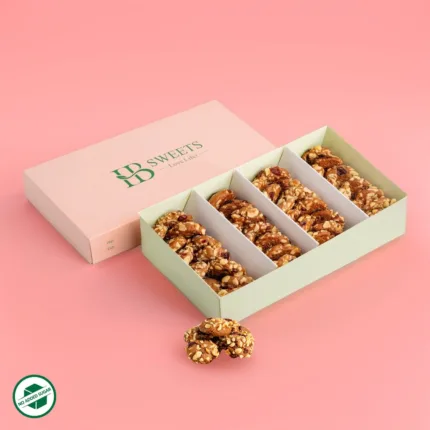For many, chocolate chip cookies are a cornerstone of comfort food. Their warm, gooey centers and bursts of melty chocolate chips evoke pure happiness. But what if you could enjoy this classic treat without the guilt associated with sugary, high-fat recipes? The good news is, creating healthy chocolate chip cookies is entirely possible! This guide dives deep into the world of healthier cookie creations, exploring alternative ingredients, substitution tips, and key baking techniques to achieve that perfect balance of taste and wholesome goodness.
Why Go Healthy with Your Cookies?
There are numerous reasons to embrace a healthier approach to cookie baking. Here are a few key motivators:
- Reduced Sugar Intake: Traditional cookie recipes often rely heavily on refined sugars, leading to blood sugar spikes and potential health concerns. Healthier alternatives incorporate natural sweeteners or reduced sugar quantities.
- Increased Nutrient Content: Using ingredients like whole wheat flour, nut flours, and healthy fats adds valuable nutrients to your cookies, making them a more balanced snack.
- Dietary Restrictions: Whether you’re gluten-free, vegan, or following a specific dietary plan, healthy cookie recipes can be adapted to accommodate your needs.
The Building Blocks of a Healthy Cookie
Now, let’s delve into the essential ingredients that form the foundation of a healthy cookie:
- Flours: All-purpose flour is a common choice, but for a healthier twist, consider alternatives like:
- Whole Wheat Flour: Packed with fiber and additional nutrients compared to its refined counterpart.
- Oat Flour: Made from ground oats, it adds a naturally sweet flavor and heart-healthy benefits.
- Almond Flour: A gluten-free option perfect for those with celiac disease or gluten sensitivity. It’s also a good source of protein and healthy fats.
- Coconut Flour: Highly absorbent, it requires less moisture in recipes. It’s also a good source of fiber and medium-chain triglycerides (MCTs), a type of healthy fat.
- Sweeteners: While sugar isn’t entirely off-limits, healthier alternatives offer a delightful sweetness without the drawbacks. Popular options include:
- Honey: A natural sweetener with a touch of floral flavor.
- Maple Syrup: Adds a subtle maple taste and antioxidants.
- Coconut Sugar: A lower glycemic index than regular sugar, meaning it causes a slower rise in blood sugar levels.
- Dates: Finely chopped or pureed dates add sweetness, fiber, and a lovely caramel-like taste.
- Fats: Fat is crucial for creating a chewy and flavorful cookie. Healthier options include:
- Coconut Oil: Solid at room temperature, it adds a subtle coconut flavor and healthy fats.
- Avocado Oil: Neutral-tasting and a good source of monounsaturated fats.
- Nut Butters: Natural nut butters like peanut butter or almond butter add protein, healthy fats, and a rich flavor dimension.
- Chocolate Chips: The star of the show! Choose dark chocolate chips with a higher cacao content (at least 70%) for a more antioxidant-rich and less sweet indulgence. Semi-sweet chocolate chips are another option, offering a good balance of sweetness and chocolate flavor.
Essential Baking Techniques for Healthy Cookies
Beyond the ingredients, specific baking techniques significantly impact the final product:
- Chilling the Dough: This allows the dough to firm up, preventing the cookies from spreading too thin while baking. This results in a chewier texture.
- Portion Control: Use a cookie scoop to ensure uniform cookie size, promoting even baking.
- Baking Temperature and Time: Lowering the baking temperature slightly compared to traditional recipes helps prevent excessive browning and keeps the cookies softer. Adjust baking time based on the chosen recipe and your desired level of crispiness.
Beyond the Basics: Customization and Fun Variations
Once you’ve mastered the fundamentals, the world of healthy cookie creation opens up for exploration! Here are some exciting ways to personalize your cookies:
- Mix-Ins: Add a delightful twist with chopped nuts, dried fruit like cranberries or cherries, shredded coconut, or a sprinkle of sea salt.
- Spices: A pinch of cinnamon, nutmeg, or ginger adds a warm and cozy flavor profile.
- Flavor Extracts: Vanilla extract is a classic, but consider venturing out with almond, peppermint, or orange extract for a unique twist.
Recipe Inspiration: A Symphony of Healthy Flavors
Here’s a sample recipe to get you started on your healthy cookie journey:
Oatmeal Raisin Cookies with a Nutty Twist
Ingredients:
- 1 cup rolled oats
- ½ cup oat flour
- ½ cup almond flour
- ½ teaspoon baking soda
- ¼ teaspoon salt
- ¼ cup melted coconut oil
- ¼ cup maple syrup
- 1 large egg
- 1 teaspoon vanilla extract
- ½ cup chopped walnuts
- ½ cup raisins
Instructions:
- Preheat your oven to 375°F (190°C) and line a baking sheet with parchment paper.
- In a large bowl, whisk together the rolled oats, oat flour, almond flour, baking soda, and salt.
- In a separate bowl, whisk together the melted coconut oil, maple syrup, egg, and vanilla extract until well combined.
- Pour the wet ingredients into the dry ingredients and mix until just combined. Don’t overmix!
- Fold in the chopped walnuts and raisins.
- Using a cookie scoop or a spoon, portion the dough onto the prepared baking sheet, leaving space for spreading.
- Bake for 10-12 minutes, or until the edges are golden brown and the centers are slightly set.
- Let the cookies cool on the baking sheet for a few minutes before transferring them to a wire rack to cool completely.
Tips and Substitutions:
- Feel free to adjust the amount of raisins to your preference. You can also substitute other dried fruits like cranberries or chopped dried cherries.
- For a nut-free option, omit the walnuts or substitute them with another chopped nut like pecans or chopped seeds like sunflower seeds.
- If you don’t have maple syrup, you can use honey or agave nectar as a substitute. However, adjust the quantity slightly as these sweeteners tend to be sweeter than maple syrup. Start with a ¼ cup less and add more to taste if needed.
- To make the cookies vegan, use a flaxseed egg instead of a regular egg. To make a flaxseed egg, simply combine 1 tablespoon of ground flaxseed with 3 tablespoons of water and let it sit for 5 minutes before using.
Exploring a World of Healthy Cookie Varieties
This oatmeal raisin cookie recipe is just a starting point. Here are some additional ideas for healthy cookie creations:
- Double Chocolate Chunk Cookies with Almond Butter: Use a combination of whole wheat flour and almond flour, mashed banana for added sweetness and moisture, melted dark chocolate, and a generous amount of chopped dark chocolate chunks.
- Spiced Pumpkin Cookies with White Chocolate Chips: Embrace the fall flavors with pumpkin puree, warming spices like cinnamon and nutmeg, and white chocolate chips for a touch of sweetness.
- Peanut Butter Blossoms with a Date Twist: Whip up a peanut butter cookie dough sweetened with mashed dates and top each cookie with a kiss of melted dark chocolate.
Remember, the key to healthy cookie baking is experimentation! Don’t be afraid to try different ingredient combinations and discover your own favorite healthy treats. With a little creativity and these helpful tips, you can satisfy your sweet tooth without sacrificing your health goals.
Bonus Tip: Batch Baking and Portion Control
Healthy cookies are perfect for satisfying cravings, but portion control is still important. Here’s a handy tip: bake a large batch and freeze half the dough for later. This way, you can easily enjoy a single cookie or a small batch whenever the craving strikes without having a whole batch readily available.
Now go forth and bake! With this guide as your compass, you’re well on your way to creating delicious and healthy chocolate chip cookies that are a true indulgence for your taste buds and your body.
Taking Your Healthy Cookie Game to the Next Level: Advanced Techniques and Considerations
While the basic principles of healthy cookie baking remain constant, there are additional techniques and considerations that can elevate your creations to the next level.
Mastering Texture:
- The Science of Gluten: In traditional cookies, gluten development plays a significant role in creating a chewy texture. When using alternative flours that lack gluten, like almond flour or coconut flour, achieving that same chewiness requires alternative strategies. Here are a couple of approaches:
- Flaxseed Meal: Ground flaxseed meal acts as a binding agent similar to gluten. When mixed with water, it creates a gel-like consistency that helps hold the cookie dough together and contributes to a chewier texture.
- Xanthan Gum: This thickening agent adds structure and chewiness to gluten-free cookies. Use it sparingly, as too much can make the cookies tough.
- The Power of Resting: Letting your cookie dough rest allows the dry ingredients to absorb moisture and the flavors to meld. This simple step can significantly impact the final texture and taste of your cookies. Aim to rest the dough for at least 30 minutes, or even overnight for an even deeper flavor development.
Sweeteners: Beyond the Basics
While natural sweeteners like maple syrup and dates are excellent options, exploring a few additional choices can add exciting flavor profiles to your cookies:
- Monk Fruit Sweetener: This natural sweetener has a zero glycemic index and a clean, slightly sweet taste. It’s a perfect choice for those watching their sugar intake.
- Allulose: Another natural sweetener with a low glycemic index, allulose has a taste profile similar to sugar but without the aftertaste. It can be used in a 1:1 ratio with sugar in most recipes.
Healthy Fats: Exploring Options
The healthy fat choices mentioned earlier are just the tip of the iceberg. Here are a couple of additional options to consider:
- Ghee: Clarified butter with the lactose removed, ghee offers a rich, nutty flavor and a high smoke point, making it suitable for baking.
- Mashed Banana: This naturally sweet ingredient adds moisture and a subtle banana flavor to your cookies. It’s a perfect way to reduce the amount of added fat needed in the recipe.
Dietary Restrictions and Baking Hacks:
- Vegan Cookies: For vegan cookies, there are excellent egg replacements available. Flaxseed eggs, as mentioned earlier, are a simple solution. Additionally, commercially available vegan egg replacers work well in most cookie recipes.
- Nut-Free Cookies: If you have nut allergies, there are plenty of delicious nut-free cookie options. Explore sunflower seed butter, tahini, or seed mixes as alternatives for nut butters in recipes.
Remember, the key to successful healthy cookie baking is finding the right balance of ingredients and techniques that suit your taste preferences and dietary needs. Don’t be afraid to experiment and have fun in the kitchen!
Beyond the Cookies: Healthy Snacking Inspiration
While healthy cookies are a delightful treat, they’re just one piece of the healthy snacking puzzle. Here are a few additional ideas for guilt-free snacking:
- Homemade Energy Bites: Combine rolled oats, nut butter, chopped dried fruit, and a touch of honey for a satisfying and energy-boosting snack.
- Frozen Yogurt Bark with Berries and Granola: Layer plain Greek yogurt with a sprinkle of granola and your favorite berries. Freeze it for a refreshing and healthy frozen treat.
- Roasted Chickpeas with Spices: Toss chickpeas with olive oil, your favorite spices (think cumin, chili powder, paprika), and roast them until crispy for a protein-packed and crunchy snack.
- Fruit and Vegetable Sticks with Hummus: A classic and healthy combination. Choose colorful vegetables like carrots, bell peppers, and celery to pair with a delicious homemade or store-bought hummus.
With a little creativity and planning, you can easily create a world of healthy and delicious snacks that satisfy your cravings and nourish your body. So, ditch the guilt and embrace the joy of healthy baking and snacking!
-
 Mix Box79.00 AED
Mix Box79.00 AED -
 Hello espresso Cookie Box59.00 AED
Hello espresso Cookie Box59.00 AED -
 Baadaam Keto Cookie Box94.00 AED
Baadaam Keto Cookie Box94.00 AED -
 Low Carb Cuties Cookie Box94.00 AED
Low Carb Cuties Cookie Box94.00 AED -
 Coin Cookie Box99.00 AED
Coin Cookie Box99.00 AED -
 Fig Tree Cookie Box89.00 AED
Fig Tree Cookie Box89.00 AED -
 Yum Stone Paleo Cookie Box69.00 AED
Yum Stone Paleo Cookie Box69.00 AED -
 Nutty Nirvana Cookie Box58.00 AED
Nutty Nirvana Cookie Box58.00 AED -
 Green Life Vegan Cookie Box39.00 AED
Green Life Vegan Cookie Box39.00 AED










